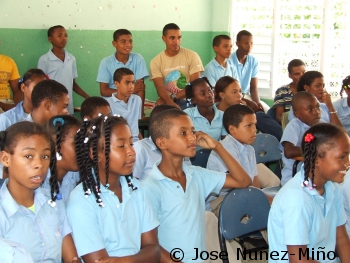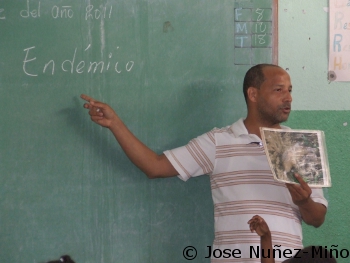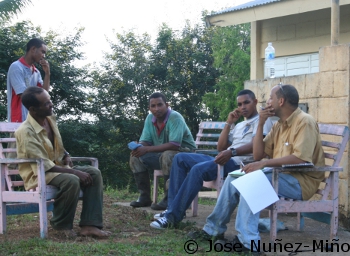Where have the last two months gone? They seem to have flown past and the lead up to Christmas is upon us. We have, as always, been very busy on all fronts over the last couple of months.


The aim is that they will take on educational campaigns of their own in the very near future. The village kids loved the infomercials and enjoyed finding out about solenodon and hutia – unfortunately many saw these species as damaging to crops but hopefully we have managed to change that perception.
We were very honoured to be invited back to the Punta Cana International School where we gave presentations last year and where we gave our second showing of the project infomercials (Spanish version and English version). Many, although not all, of the students there were already aware of the species we work on as well as our work trying to study and conserve them so the focus was more on updating them on our findings. We were bombarded with questions which was a great reflection on the level of interest that students had. Amity Beane, a teacher at the school, arranged for feedback from the students and my favourite answer to the question “What was the most interesting part about yesterday’s presentation?” was “What we liked the most was that many people don’t even know that they existed and how they studied them”. As we step up our educational campaign and distribute the infomercial films more widely we want more people to know about these unique species as well as how we study them.


On the research front, we were very happy to welcome back Ros Kennerley who has been working really hard to get more data on solenodon night time travels although she has been hampered by loads of rain. Things should speed up now that the dry season is here. We have also continued our work in Los Haitises National Park where Pedro Martinez has been leading the “Sociedad de la Hispaniola” team. We have carried out several expeditions to survey remote bits of this amazing park. During these expeditions we do searches for signs of solenodon and hutia but also carry out interviews with community members to assess people’s knowledge and perception of the species too. Although we have found evidence of solenodon and hutia in some places in Los Haitises, we have also, sadly, found lots of areas that are being deforested, very often by burning. On the brighter side and thanks to camera traps purchased with funds from the BBC Wildlife Fund, we now have the first video footage of hutia from Los Haitises. You can see the footage on our twitter feed or facebook page.
Over the coming months we will be using all the information that we have gathered to make sure that future conservation plans will be as well informed as possible about what we need to do to ensure the survival of solenodon and hutia well into the future. This means that we will have to use some of our efforts to analyse all the data but this will not put a stop to the work in the field since all our team members are now increasingly independent.
The next phase will be absolutely critical to the success of the project in the long term. We need to build on the collaborations we have formed already and form some new ones in order to ensure that the future of solenodon and hutia is secured. Luckily, there are many people who have expressed a willingness to help and contribute in this cause which is very encouraging. I hope I never have to read a headline about the Hispaniolan solenodon or hutia like I did about the Little Earth Hutia (from Cuba) which was declared extinct in a Cuban press article recently. With all our combined efforts I am confident that we can ensure that these unique mammals and their habitats will be around long into the future.